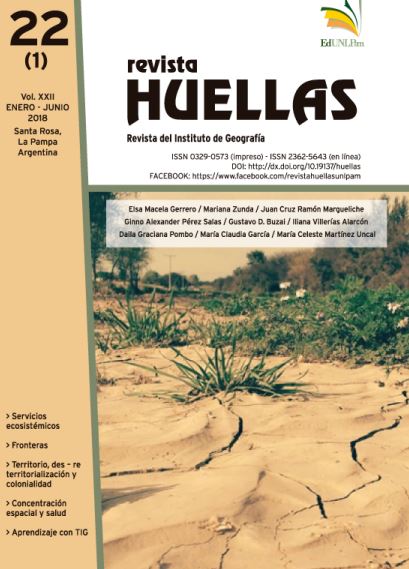Las fronteras como espacios de configuraciones territoriales simultáneas. El caso de la República de Malí en África
Palabras clave:
Frontera, Territorialidades, Poder, Estrategias, MalíResumen
Cuando hablamos de fronteras en África ingresamos en un terreno difuso y complejo. Cualquier posicionamiento teórico-conceptual nos lleva a disipar del análisis otras perspectivas teóricas y realidades concretas que solapadamente se gestan en los espacios fronterizos. Cuando el papel del Estado y los efectos de sus políticas son subestimados se corre el riesgo de caer en el “esencialismo de la hermandad”, minimizando conflictos, y de esta manera dificultando la visualización de la asimetrías y dimensiones de inclusión y exclusión (Grimson, 2011).
Pero por otro lado, las fronteras se construyen en procesos de hegemonía relacional, donde si bien hay lógicas de poder que se imponen, los espacios de resistencia también entran en juego. Tobío (2014) plantea la territorialidad de instancia dominante y la territorialidad de instancia subalterna. Ambas territorialidades nos permiten no solo comprender cómo se configurar las fronteras, sino también las dinámicas de las mismas.
Tomaremos como caso de análisis a la República de Malí y las diferentes fronteras que se están gestando en su interior en la actualidad: la frontera de las empresas extranjeras, la de la ciudad controlada, la de la comunidad de los tuareg, la de la configuración impuesta por el afroislam y la que asigna la presencia física y ambiental de la franja sahelina. El objetivo es poder identificar las configuraciones territoriales que presentan las fronteras y detrás de ellas las estrategias y anclajes territoriales que despliegan los diferentes actores en su territorio, a partir de las categorías espaciales mencionadas.






.png)













3.jpg)
4.png)


